Treasures Amid Ruins
The less noticed, less loved, and often beautiful life found in dirt and decay
Look down; look closely. Focus on the surface of a shelf mushroom. Do you see that dark speck of soil? But it’s walking! It’s not soil at all!
On a warm, sunny Saturday six days after Imbolc, just over halfway between the Winter Solstice and the start of spring, in the midst of February’s first False Spring, I stared at the scalloped rows of shell-shaped, violet-toothed polypore mushroom (Trichaptum biforme), extending from the surface of a log as though pale bivalve shells had been stuck into the soft wood. Just as one might find on a shell, algae painted thin stripes of green on the surface of many of the mushrooms. From their surface stood the fruiting bodies of an even smaller fungus shaped like tiny black sewing pins — a straight stalk topped with a small, round head. These are Phaeocalicium polyporaeum, known as “fairy pins” or “polypore pins.”
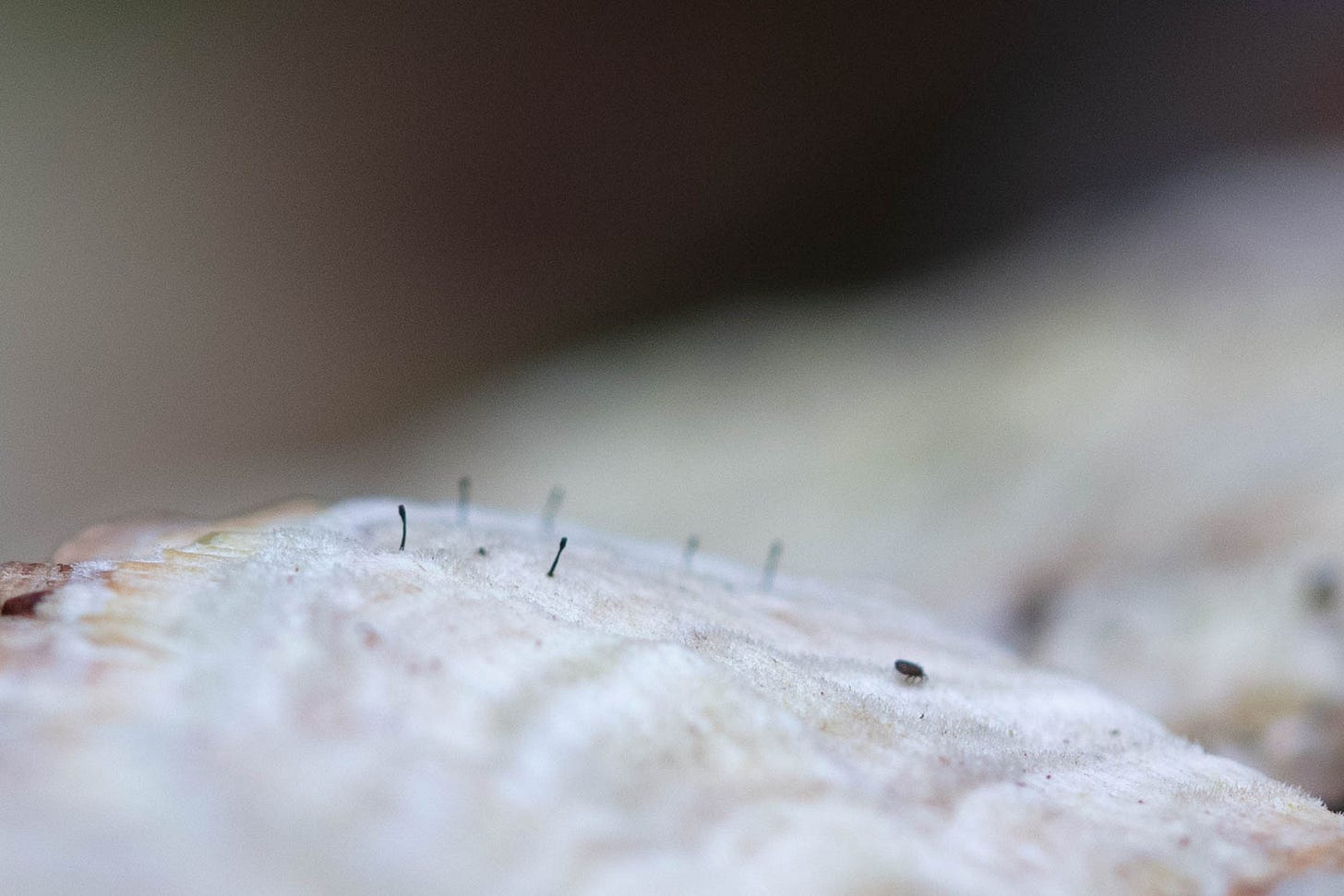
Some naturalists and even some field guides will describe fairy pins as a lichen, and some of its relatives in the genus Phaocalicium are lichens, but P. polyporaeum is not. It exists without a photobiont, and is only found with the algae on the surface of polypore mushrooms. I’ve only found it on Trichaptum biforme (violet-toothed polypore), though it may also be found on Trichaptum abietinum1 (purplepore bracket) and Trametes versicolor2 (turkey tail). To find fairy pins, first look for a fan-shaped polypore mushroom with a hint of purple, both on its underside pores and at the margin of its upper surface. T. biforme is found on the wood of deciduous trees; it is virtually identical to T. abietinum, but that species is found only on conifers.
Once you’ve found the polypore, look for black spots, like tiny specks of soil, on the mushroom’s surface. Then look closely with your hand lens to see if a matchstick silhouette takes shape from those tiny grains of black. If so, you’ve found the fairy pins.
On this warm February afternoon, not all of the black specks were polypore pins; some were moving! A hand lens brought shape and depth to these, too. Traveling among the fuzzy upper surface and pore-stippled lower surface of the polypore were tiny, six-legged creatures — springtails, probably in family Hypogastruridae, in the order Poduromorpha, also known as “plump springtails.”
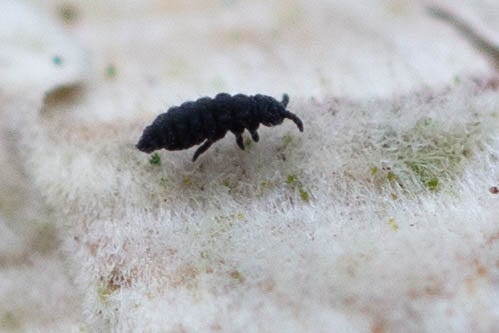
Springtails (Subclass Collembola) are one of the three main subgroups of Class Entognatha, the sister taxon to Class Insecta within Subphylum Hexapoda. In other words, though some of us may have learned in school that springtails were a kind of insect, modern understanding of arthropod evolution shows that, while they have six legs, they are not insects, and may have evolved to have six legs independent of insects. Enthognathans are also distinct from insects in that they are apterous — wingless — and never evolved wings (unlike some insects that don’t have wings, but their ancestors did), and their mouthparts are entognathous — within their head — instead of external, like the mouthparts of insects.3
Small, black “plump” springtails can be found on many shelf mushrooms; in that respect, they may be less discerning than polypore pins (though I have no idea if I am seeing different species of springtail on different species of mushroom; at the level of magnification available to me, these springtails all appear identical.) Like other members of order Poduromorpha, they have oval bodies with six distinct abdominal segments and three thorax segments. Like other springtails, they have short, segmented antennae and what appear to be two large black eyes, but these are actually two eye plates — clusters of many small, simple eyes.
While I was still studying the polypores, attempting to find and photograph both fairy pins and small black springtails, my friends Leila and Wes looked for more small arthropods by another rotting log and its surrounding leaf litter. I moved over to see what they had found — a small, pale hexapod similar to the springtail, but with a body that seemed flattened, compressed, and ended in two dark prongs similar to those of an earwig. Leila explained that this was a forcepstail, something I’d never seen nor heard of before. Like springtails, forcepstails are entognathans, but they are in Class Diplura (two-pronged bristletails) and they are predatory.
Further up the trail, while we lunched on lichen-covered boulders, Leila pointed out another unusual, wingless hexapod — a jumping bristletail (Order Archaeognatha, a primitive, wingless order of insect). The bristletail (pictured below) raced on top of the boulder, weaving among leafy thalli of foliose lichens, hiding among pine needles and other brown plant debris, and even jumping, reminding me of a springtail.
The entire experience reminded me how much life and diversity can be found in a small space, once one is taught how to look.
The next weekend, I stood in my back garden watching the dogs frolic before breakfast. At my feet were logs that I’d been collecting and laying at the borders of garden beds, over which I’d raked a dense cover of fallen leaves. Bracket mushrooms adorned some of the logs. Looking down, I recognized small dark spots moving across the surface of the mushrooms. Looking closer, I saw their segmented oval bodies and short antennae; they were plump springtails!
Eager to apply these new skills, I began bringing my hand lens and camera into the yard. One cold February evening, about an hour before sunset, I carefully rolled a mushroom log over on its side and stared. I scanned for any small objects that might be soil fauna (but might also be debris), and I stared, watching for movement. A tiny dark globe moved among the pores of a bracket mushroom, and another chubby round creature — this one paler — moved along the cracked wood of the log, along the shadowed edge of a mushroom, as though gathering the courage to enter the darkness within. Looking through a hand lens showed me that both were globular springtails (Order Symphepleona). Unlike plump springtails, the segments of the thorax and abdomen of globular springtails are not conspicuous. With a bulbous body much larger than their heads, globular springtails could be mistaken for tiny spiders, if not for their six legs, long antennae, and pair of eye plates. Instead, they look like adorable bugs, with cute round bodies and big, childlike eyes.
The darker springtail was Sminthurus mencenbergae, a relatively common species that I’d documented in my yard before. This individual was brown with darker brown, almost black lines tracing an ornate pattern on the springtail’s head and body; a lighter form of the species is white or tan with brown lines tracing the pattern.
The other springtail appeared pale orange with its pattern comprised of mostly dark red lines, with some hints of dark purple and pink, as well as white and black. One dark purplish-red line began on the springtail’s head, between the eye plates, and ran down the body as though bisecting it, and that line itself was crossed with short horizontal lines; it stopped about halfway down the abdomen, where a series of curved lines arc across the body, creating semicircles of mottled purple, pink, white, and black. I found a second individual with such markings walking across the blue-green lichen on a neighboring log.
The next morning, I found out that these two were the first record of their species, Sminthurus carolinensis, ever documented on iNaturalist. I had made a discovery without leaving my backyard.
That afternoon, I returned to the back garden, searching under logs and on fallen leaves. Springtails jumped, like flying sand, before I had a chance to even tell what color they were. A few remained in place long enough for photos; most were globular springtails, all bright colors, like lemon yellow, marigold orange, and salmon pink. Elongate springtails in more muted tones — tan, beige, brown — also bore ornate patterns.
These creatures are the size of dust, yet look closely to see color and intricate patterns of lines and curves — like a painting on the head of a pin. Though much remains to be studied and learned about these — such as what they eat and what eats them — what is known is that they contribute to the breakdown of organic matter, turning the dead and decaying — the ruins of what once lived — into nutrient dense soil. Within that soil they travel, small yet colorful and shimmering with a faint iridescence; they are tiny, walking jewels amid the dirt and decay.
Late winter and early spring — right now — is the time to find them. Springtails rely on moisture and prefer cool temperatures; the heat of summer that brings a vast diversity of their insect relatives is dangerous for springtails.
And so, while we wait for spring to fully bloom, before the summer blazes into being, look down on the ground. Get as close as you can. Scan for movement. Bring a hand lens, and focus. A whole world of discovery awaits. In addition to mushrooms and wingless hexapods, find tiny winged barklice; small beetles; mites — some of them bright and colorful, like the hot pink trombidiform mites; symphlyans; centipedes; earwigs; pale, wormlike insect larvae; and — a topic of a later essay, I hope — millipedes. Look on and under mushrooms; study the life on rotting logs; and carefully flip over old boards and garbage forgotten on leafy ground. In the words of Rumi, “seek treasures amid ruins.”4 Among the discarded, dead, and decaying, find life and color.
Thanks to the following people who have helped with identification and information about springtails and other apterous hexapods: Leila Dasher, Pete Lypkie, and the #springthings channel of the unofficial iNaturalist Discord. If I have left anyone out, it was unintentional; please let me know!
I consulted the following sources and recommend them for additional information about springtails and soil fauna:
A Chaos of Delight: Exploring Life in the Soil
Checklist of the Collembola of the World
Collembola on BugGuide
Springtails from the Missouri Department of Conservation
Upcoming Events and Community Science
Rutgers University Personal Bioblitz 2025 - Yesterday, March 1st, was the start of the 12th annual Personal Bioblitz. It runs from March 1st-May 15th every year and is open to those interested in nature who have a connection to Rutgers — students, faculty and staff, alumni, previous Bioblitzers, and friends, including online friends. The purpose is to find and document and learn about as many wild things as we can, both to learn, have fun, and contribute to science. To join or to check out the stats, see the official iNaturalist project.
Georgia Botanical Society has several free field trips this spring, including Devil’s Fork State Park (in South Carolina) to see Shortia galacifolia on March 18th and the granite outcrop at Clinton Nature Preserve in Villa Rica, GA on March 22nd. Trips are free (except for the parking/admission fee the parks might charge) and open to non-members. Full disclosure: I am a Botanical Society board member.
Georgia Bird Fest is coming up! It runs from April 11th-May 16th, but registration starts this week. See the list of events here.
Bessette, Alan E., et al., Polypores and Similar Fungi of Eastern and Central North America, University of Texas Press, 2021, p. 355.
Allen, Jessica L. and Lendemer, James C., Urban Lichens: A Field Guide for Northeastern North America, Yale University Press, 2021, p. 60.
This information came from iNaturalist.org. See Entognatha, Hexapoda, and Collembola.
This quote is attributed to Rumi, but I have not yet found in which poem or writing it appears. If anyone knows, please tell me!

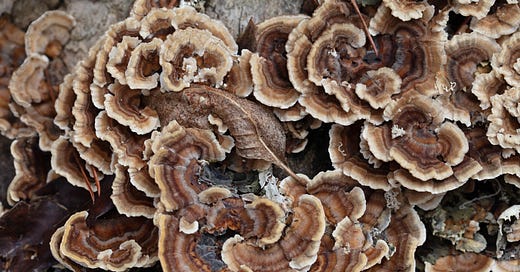



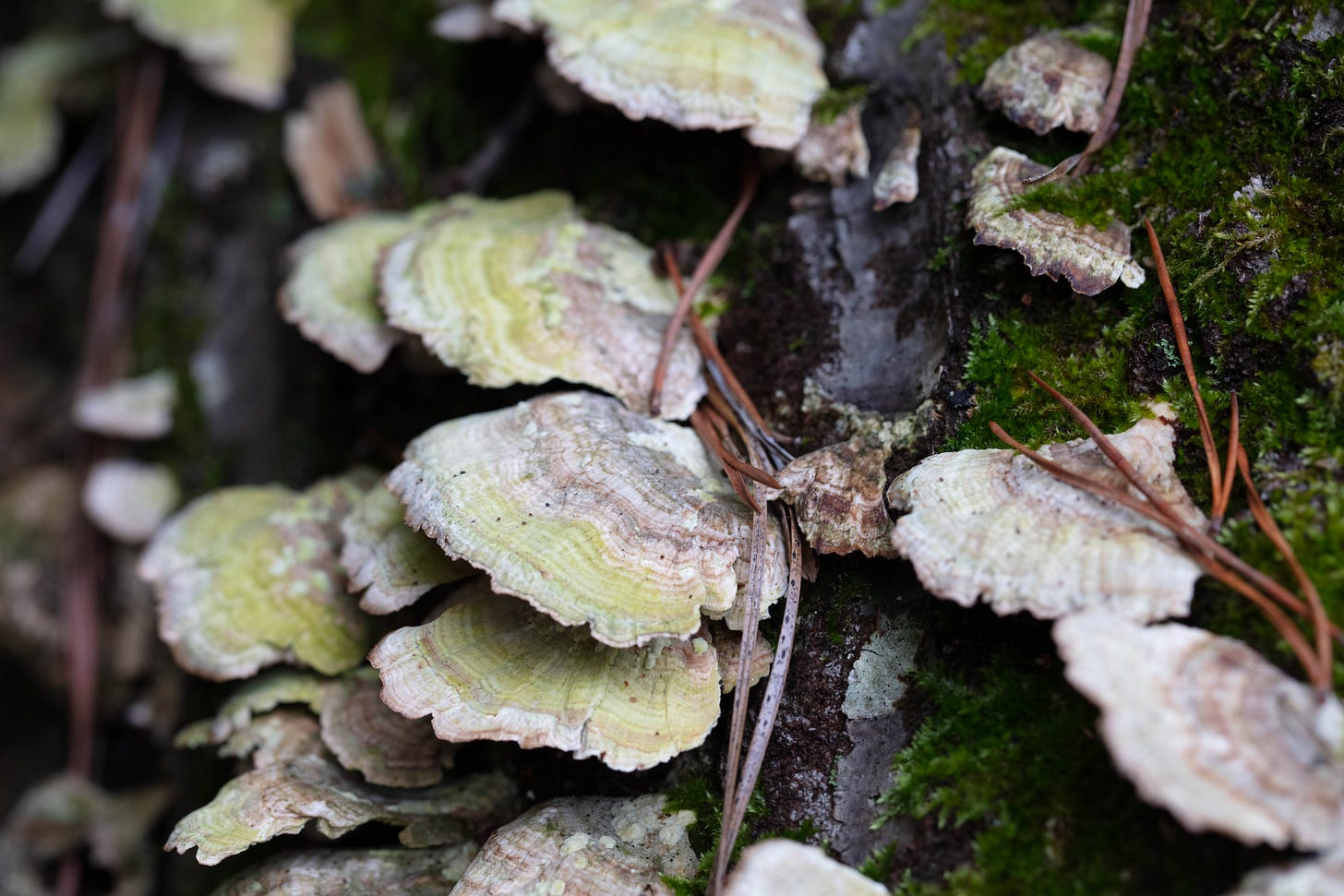
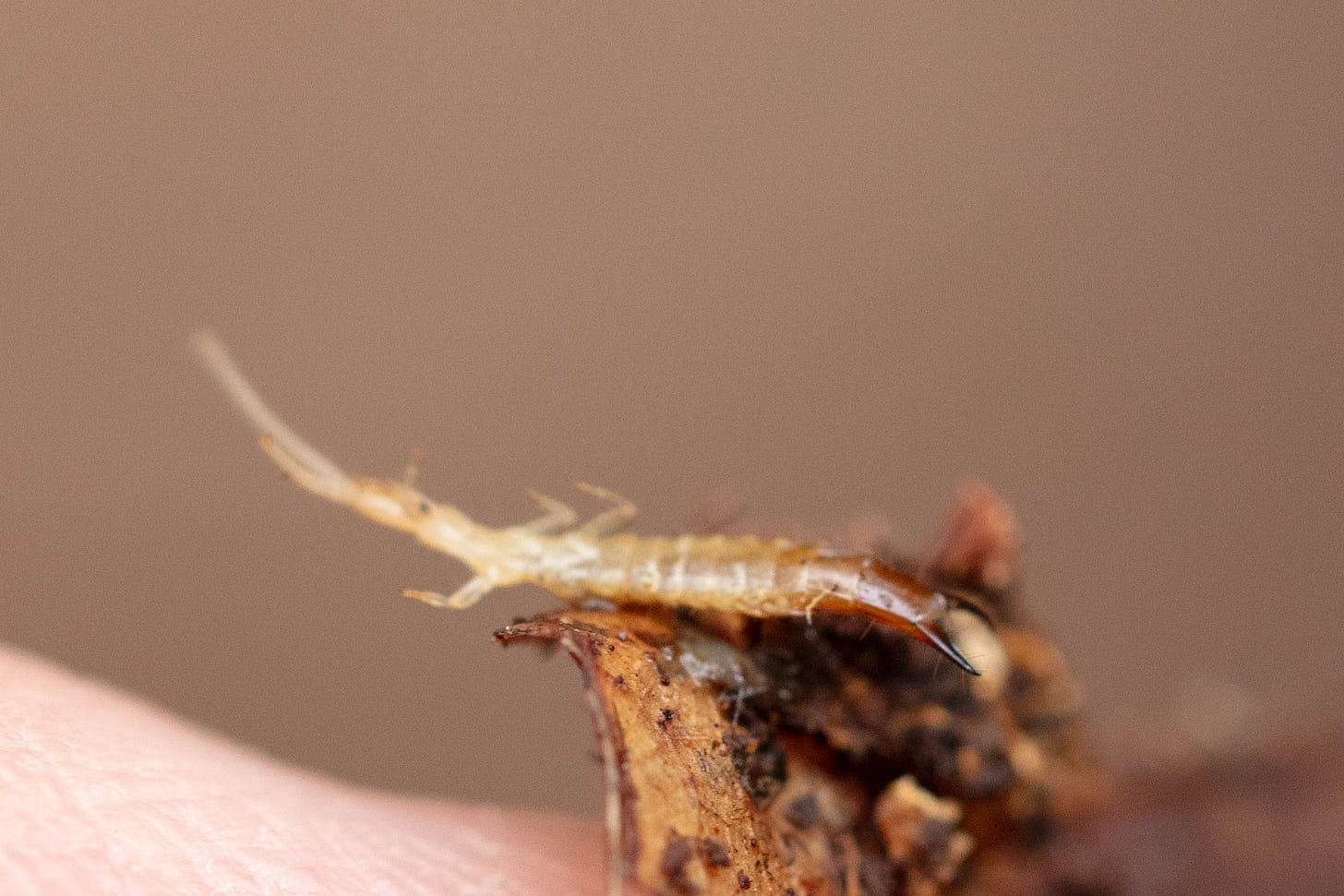


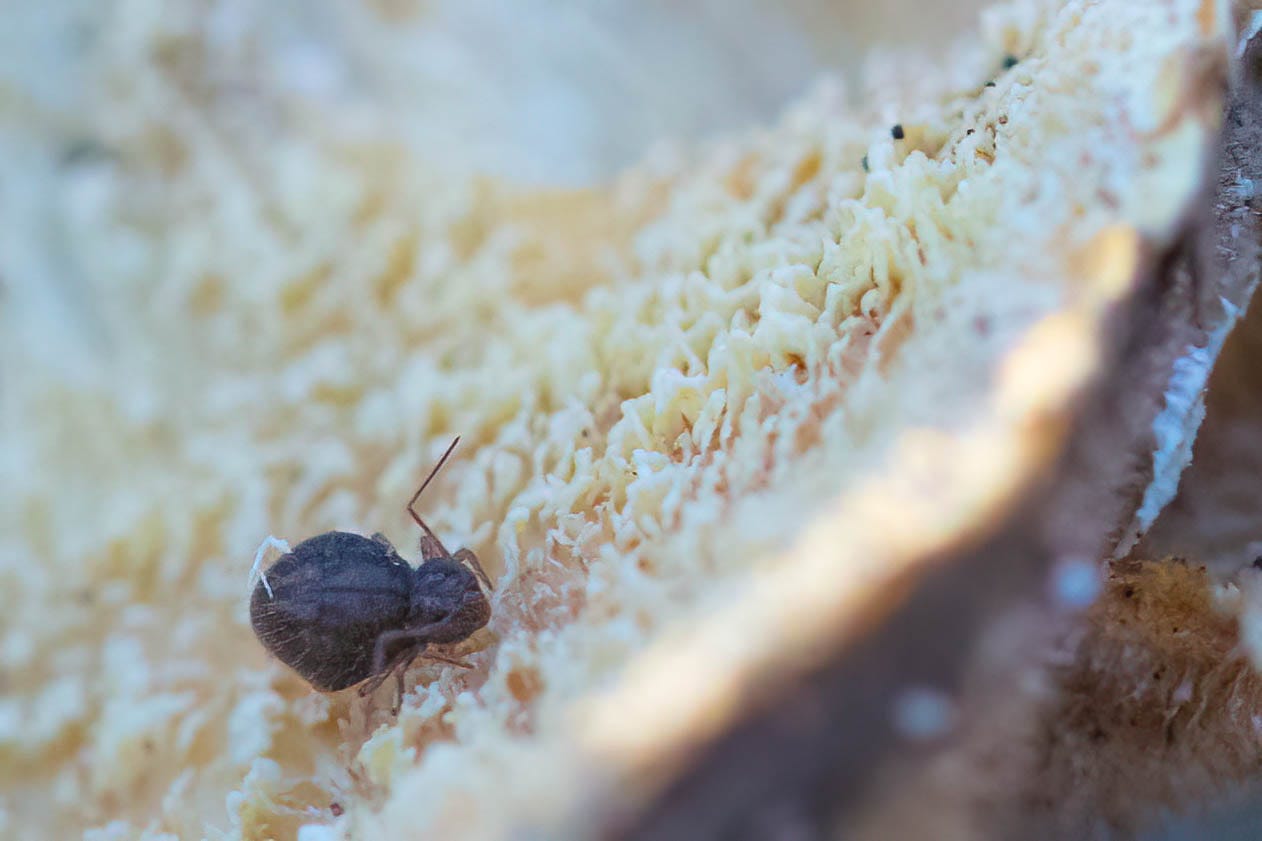
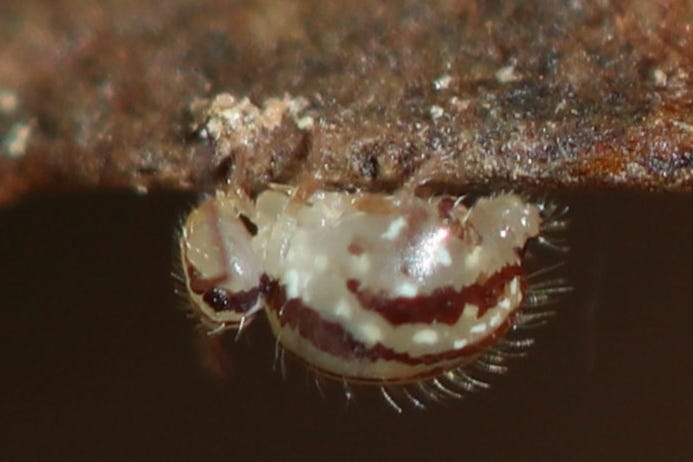
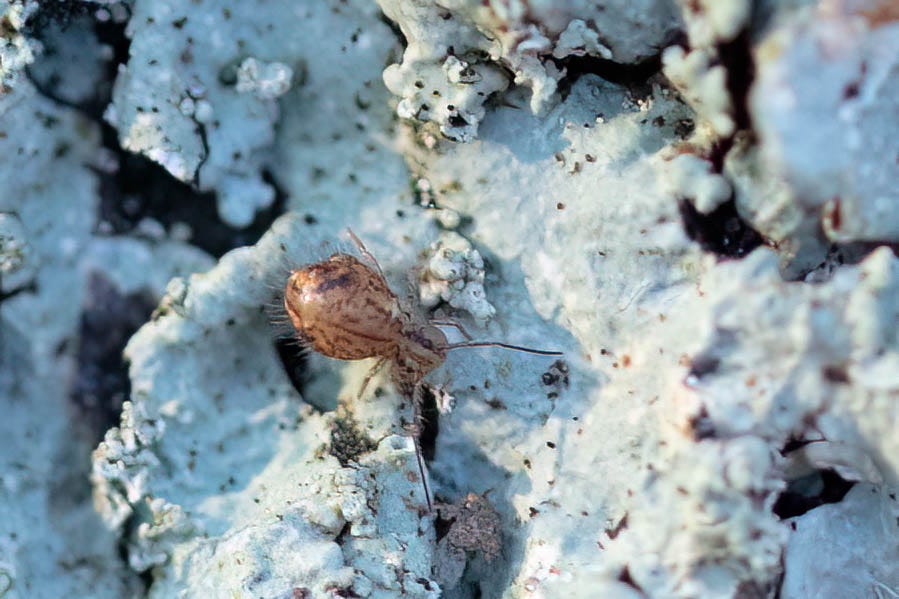
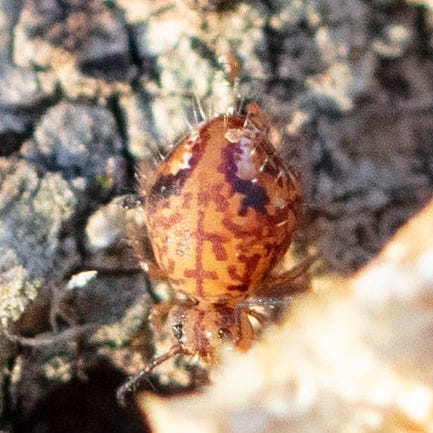
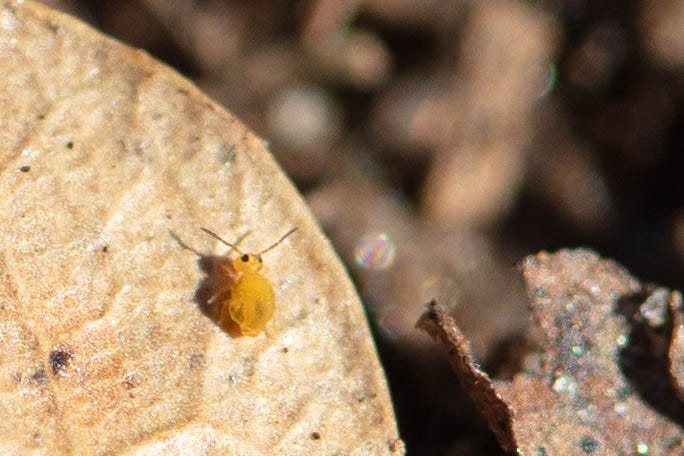
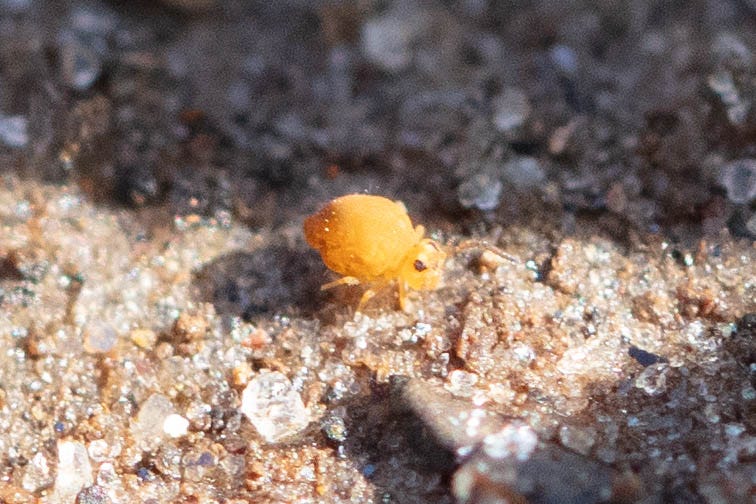
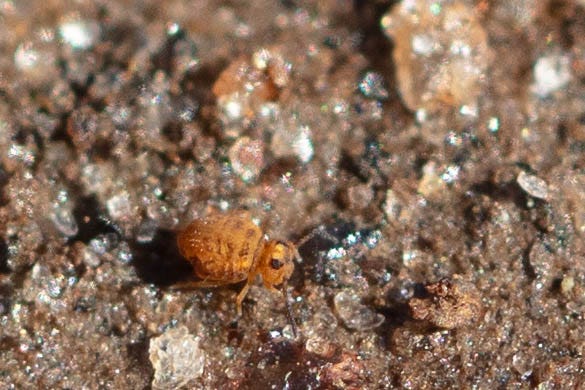

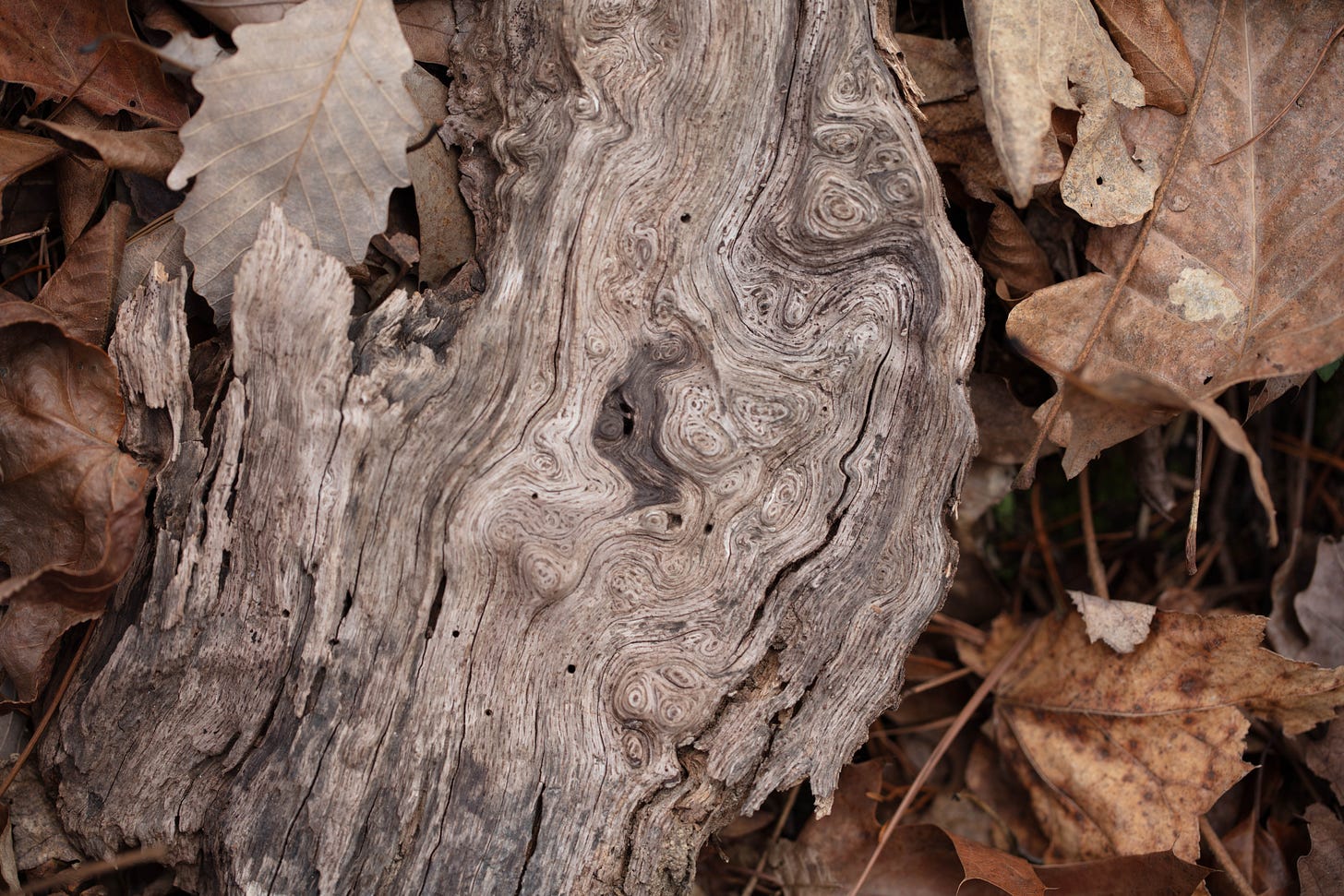
Truly fascinating - the life that exists underfoot that we mostly never see.
Fascinating--and such amazing close-up photography. Wow! I loved learning about the fairy pins and tiny creatures we might fail to spot.